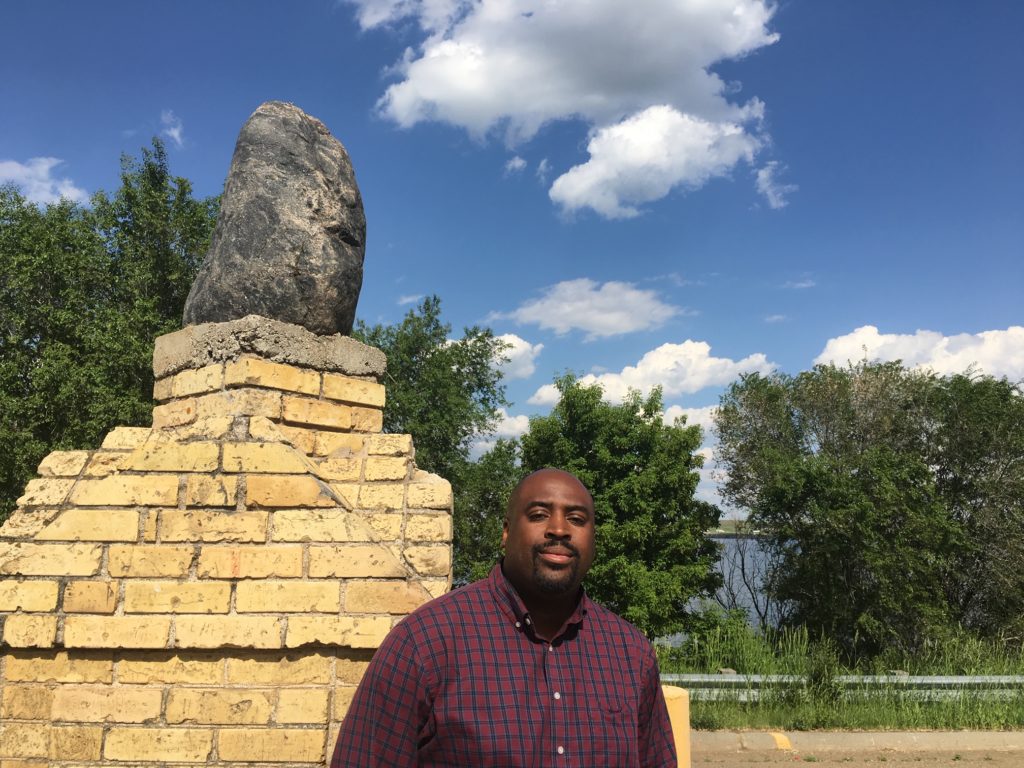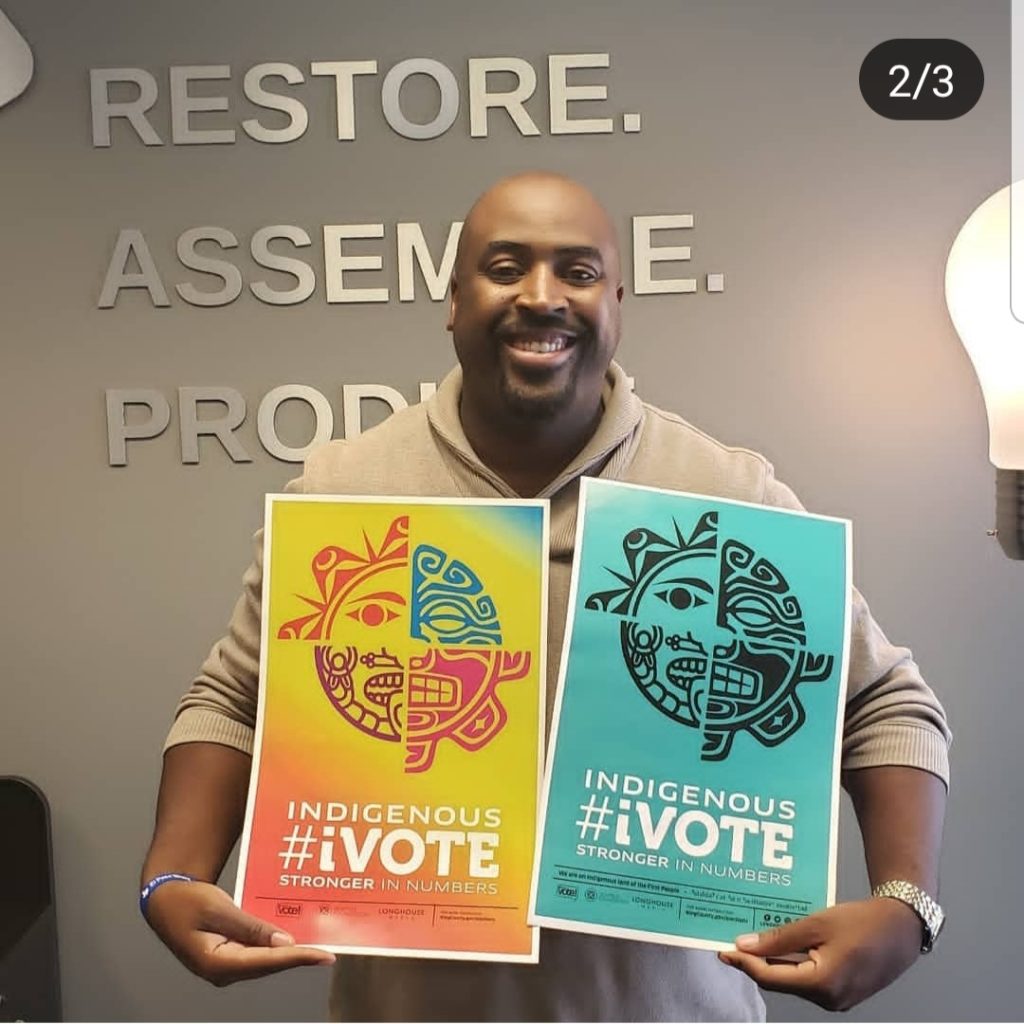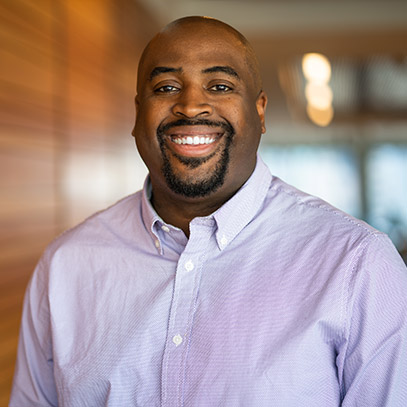By Jonathan Cunningham, Program Officer, Seattle Foundation
Going PLACES is an occasional blog series featuring the voices and experiences of TFN’s PLACES Fellows. For more information on the fellowship, and to read past blog posts from our fellows, visit here.
Growing up and reading about the atrocities the United States government committed against Native American tribes in the past, those wounds always struck me as close in nature — related in a way — to the atrocities that enslaved Africans experienced during a similar time period in the U.S. Thus, I’ve always wanted to have closer relationships with Native Americans — to talk about our shared experiences. However, being raised in Detroit, Mich., didn’t allow for that. I didn’t know any Native American families as a child or young adult. So like many kids raised in a U.S. school system, I only knew what I read about in school or saw on T.V.

As a 2019 PLACES fellow, when the list of site visit locations was announced, I found myself most intrigued by visiting Bismarck, North Dakota. I was excited to learn we’d get a chance to spend time with Indigenous leaders on the ground in the heart of Indian Country to hear about what issues are most pertinent with the Lakota people. I was immediately excited, humbled and nervous to learn that we’d not only spend a day visiting the Standing Rock Reservation, but that we’d meet with members of their tribal council — a very rare honor. I first learned about the Standing Rock Reservation during the intense stand-off and fight against the Dakota Access Pipeline in 2016. The resiliency, resistance and indigenous wisdom which emerged during the protests at Standing Rock captured the world’s attention for 10 months. For anyone interested in learning more about it, check out videos and stories by Native filmmakers, who were best positioned to do the story justice. In January 2017, I wrote a story for City Arts Magazine in Seattle about one of the most powerful women I know, Tracy Rector, who is an Emmy-award winning mixed Choctaw/Seminole filmmaker, writer, storyteller, healer and executive director of the non-profit Indigenous Showcase, who traveled to Standing Rock with her son Solomon to experience the spiritual protest firsthand and capture it on film. Her account of the beauty she experienced at Standing Rock, juxtaposed with many of the problems and culture clashes that arose when larger groups of “white allies” arrived at the camp, is quite powerful. In a way, that’s a story which plays out time and time again in philanthropy as well.
I wrote that story just as my philanthropy career was beginning. My interview with Tracy Rector was published January 17, 2017. Ironically, that was also my official first day as a program officer at the Seattle Foundation. As a funder in Seattle, a city named after the Suquamish and Duwamish tribal leader Chief Sealth, it’s my responsibility to build alliances with the original inhabitants of this land, the traditional Coast Salish people. I have to humbly admit that my connections to Native communities as a funder are not as deep as I would like them to be. I have a long way to go in building stronger relations with the Native tribes in Greater Seattle. It’s not easy — but it’s not impossible either. At my most self-critical, I think it’s my fault for not trying hard enough or doing better outreach to ensure our grant programs have strong Native representation in the applicant pool. But I also have to remember many structural barriers exist that often prevent Native organizations from applying for grant programs, including one that doesn’t take much brain power to figure out: After 500 years, Native folks have ample reasons not to trust institutions. And despite the mutually expressed desire for Black folks and Native folks to work together more often, it doesn’t happen nearly enough. As a challenge to myself, I’d like to dive deeper into why that is.
Being in North Dakota opened my eyes to many things happening in tribal communities that I wasn’t previously privy to and I’d like to share those lessons with others. I found myself incredibly impressed during our site visit to the United Tribes Technical College, listening to Scott Davis who heads the North Dakota Indian Affairs Commission. Some of the things they’re working on building up is tourism, technology, clean energy, education, and strengthening relationships between tribal communities and the federal government. Davis, who is Lakota and Cheyenne, reminded us that most of the treaties signed by Native tribes and the federal government weren’t honored and were disregarded by local governments. The government’s legacy of giving their word and taking it back whenever they chose is a problem that’s centuries old and it still plays out today.

I immediately thought of the racist term “Indian Giver” used to categorize Native Americans who didn’t keep their word…who gave things and then took them back—and felt the irony. It’s takes an unfathomable amount of racism to commit centuries of atrocities against a people, craft treaties only to repeatedly break them and then label the Native Americans as the ones who were untrustworthy.
Other nuggets of wisdom that stayed with me: “Trauma is carried in our DNA. Alcoholism, boarding schools, child abuse. Mental health. A lack of access to health and wellness for our Urban Indians. Murdered Native women. These traumas are carried in our DNA. But my people also have resiliency and courage. They didn’t break us.”
There’s so much to unpack in that quote from Davis. I’m someone whose sobriety is incredibly important to me, thus my ears really perked up when Scott mentioned he was most proud of being 13 years sober. It’s no secret that alcoholism and substance abuse is a big issue within Native communities, just like it is within African American communities. That’s yet another thing where Black and Native folks have used substances as coping mechanisms to deal with the trauma that’s been inflicted upon us in this country for centuries.
Popular author, speaker and philanthropy professional Edgar Villanueva’s seminal book Decolonizing Wealth, also speaks about epigenetics and ways trauma is carried down through our DNA. Not surprisingly, Villanueva is Native American, thus this was another reminder of how the field of philanthropy would be wise to humble itself and learn from Native wisdom more often.
When Scott spoke about the murdered Native women, I couldn’t help but think of how this was becoming an epidemic all across Indian Country. According to Davis, part of the problem is jurisdiction issues between local/state officials and tribal police in investigating crimes. Tribal police fall under the Bureau of Indian Affairs, and there aren’t enough law officers to cover the vast territories on reservations. Scott mentioned there are times when there’s only one tribal police officer on and 911 response times can take upwards of 45 minutes. If this is the case, it’s not surprising crimes go unsolved.
Here in Seattle, our daily newspaper the Seattle Times, is running a powerful multi-part series video series about violence against Missing and Murdered Indigenous Women (MMIW). Roxanna White is featured in one of the videos. She’s an enrolled member of the Nez Perce tribe. I know her personally and her story of the sex trafficking that occurs within tribal communities is powerful and deserving of more attention. Seattle Foundation is now proudly partnering with Seattle Times on an Investigative Journalism Fund, and while there are many stories that deserve deep investigative reporting, having more resources committed to daylighting pertinent issues within Native communities is a worthwhile cause that we’re looking at putting more muscle into as a foundation.
Through Davis we also learned that Native Americans weren’t considered citizens until 1924. Before that they were considered wards of the government — on their own land. My jaw almost hit the floor. Peak racism at its finest.
The United Tribes Technical College offers 16 associate degrees, four bachelor’s degrees and a technical training program. Scott mentioned that within Native communities, they noticed that some of their youth were going to traditionally white colleges and experiencing culture shock. They were going to state colleges but unfortunately dropping out and coming back home. The need for a space like United Tribes Technical College reminds of how important Historically Black Colleges and Universities (HBCUs) are and how they have long served as a haven for Black students from the same cultural and racial issues indigenous students have been met with.
Lorraine Davis also spoke to us. She heads the Native American Development Center and helps with the Community Development Financial Institutions work. They offer peer to peer support for businesses. Peer support to help people in recovery. She was very knowledgeable in how Community Development Corporations (CDCs) work. She helps with streamlining the process to getting Native entrepreneurs business loans. She taught us about the website Prosperity Now and the invaluable data it provides when looking at trends within minority communities. They are working to get data broken down by tribes I’ve been using the website since I learned of it through her. Lorraine mentioned that there aren’t a lot of foundations in North Dakota but much of her work is supported by the Northwest Area Foundation.
One of her many one-liners. “If you’re looking for solutions, start with the tribes. They have resilience and solutions but people don’t ask.”
Lorraine, who is very strong in her personality, is Scott Davis’ wife but doesn’t like to be referred to only as that. She’s successful and has her own identity apart from her husband’s. Amen to that.
If I’m going to build the deeper relationships with the Native organizations whose work I’m responsible for funding, I’ve got a lot more work to do. I’ll continue to expand my outreach in Native communities, ensure there are Native community reviewers helping us making decisions for all of the grant programs that I manage, and learn the names of all the tribes in the Puget Sound area. That outreach can’t just be by email alone. You have to get out and spend time with some of the Native leaders in our community and let them get to know you. That’s the only way trust is built. One recent progress on this front is I’ve asked our Community Programs team to start each of our meetings with a Land Acknowledgement, and they agreed. If I’m doing all of these things “in a good way”, as Standing Rock Tribal Chairman Mike Faith repeatedly said during our visit, I think I’ll make progress. It’s a responsibility that I, as a program officer, and foundations in general need to keep top of mind. Foundations based in the Puget Sound area undoubtedly owe a debt of gratitude to the Coast Salish tribes whose land we stand upon each day.
About The Author

Jonathan Cunningham is a program officer at the Seattle Foundation who brings a wealth of professional experience in developing, implementing and managing community initiatives. He is currently a Seattle Arts Commissioner with deep knowledge of navigating public, private and municipal partnerships. Jonathan previously worked at the Museum of Pop Culture (MoPOP) as Manager of Youth Programs and Community Outreach efforts and is passionate about using arts & culture as a strategy to create racial justice. He is a graduate of the University of Michigan and founder of The Residency, a youth development through hip-hop program based in Seattle.
